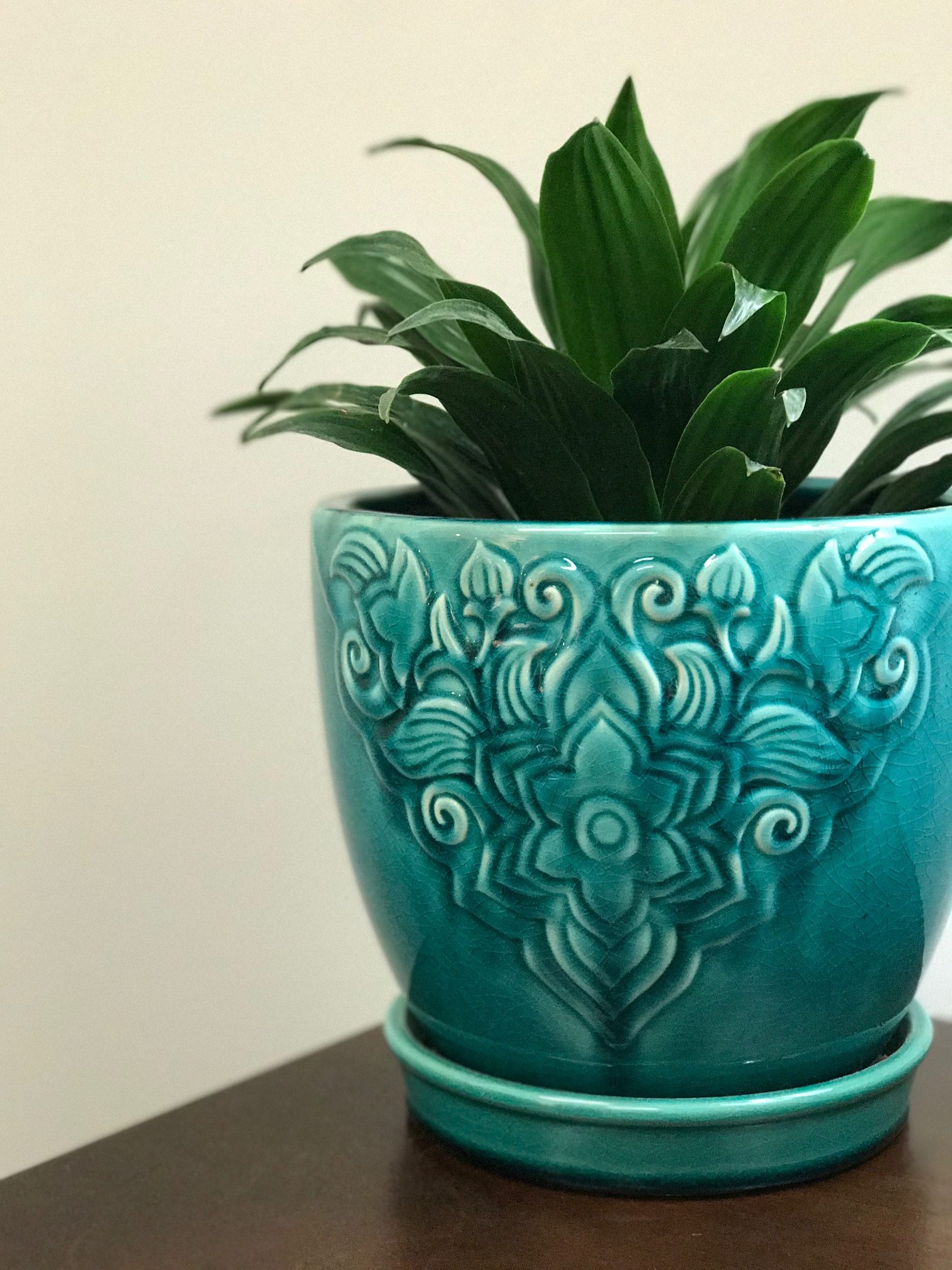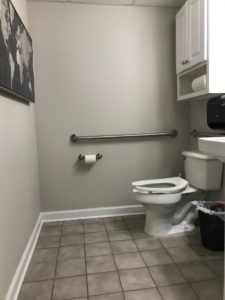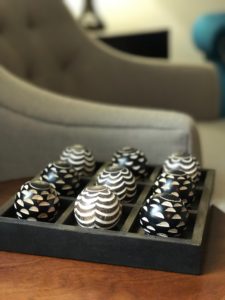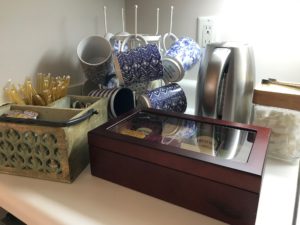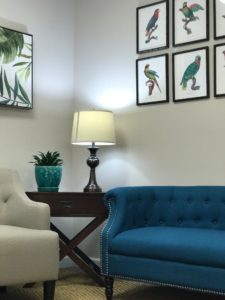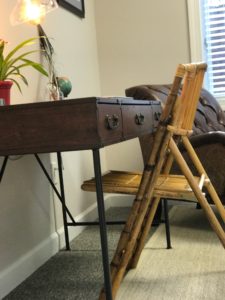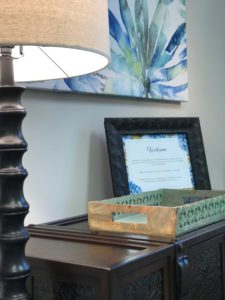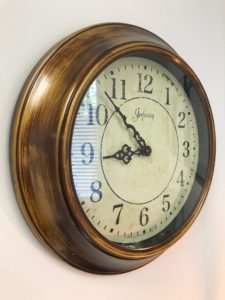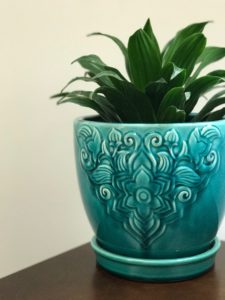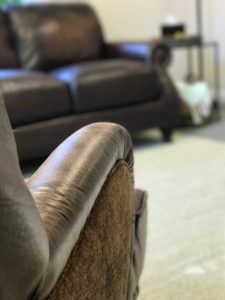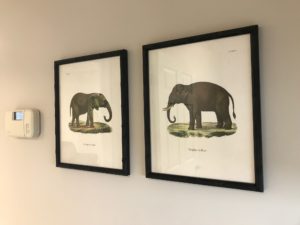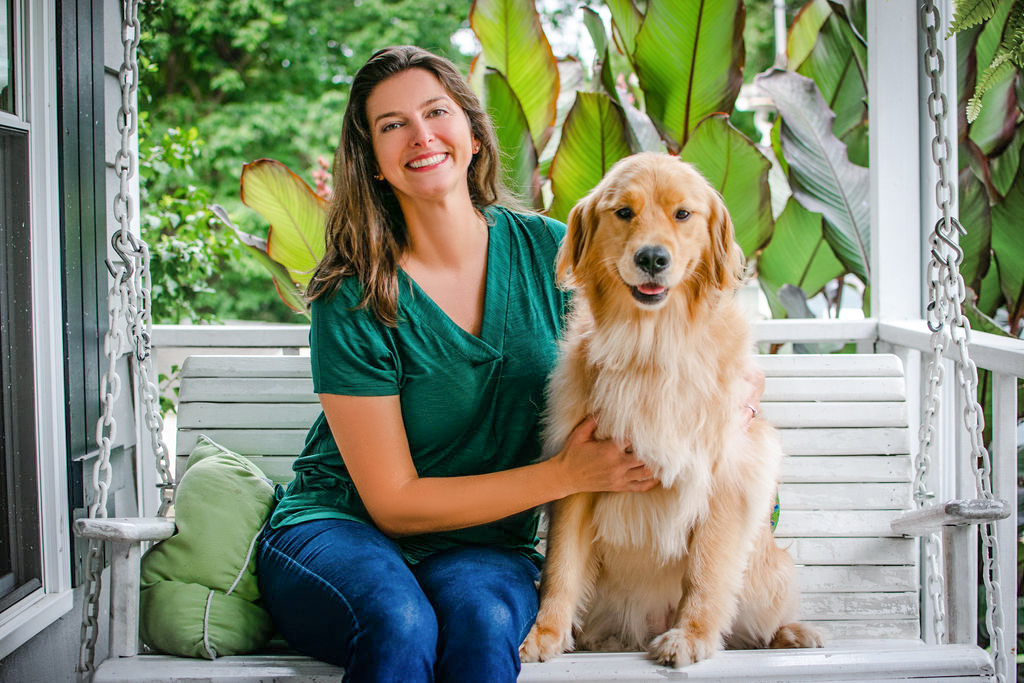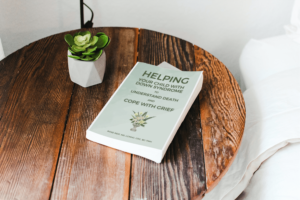Being a therapist who offers counseling for clients with acquired disabilities, I had some unique things to consider as I hunted for and decorated my new office suite.
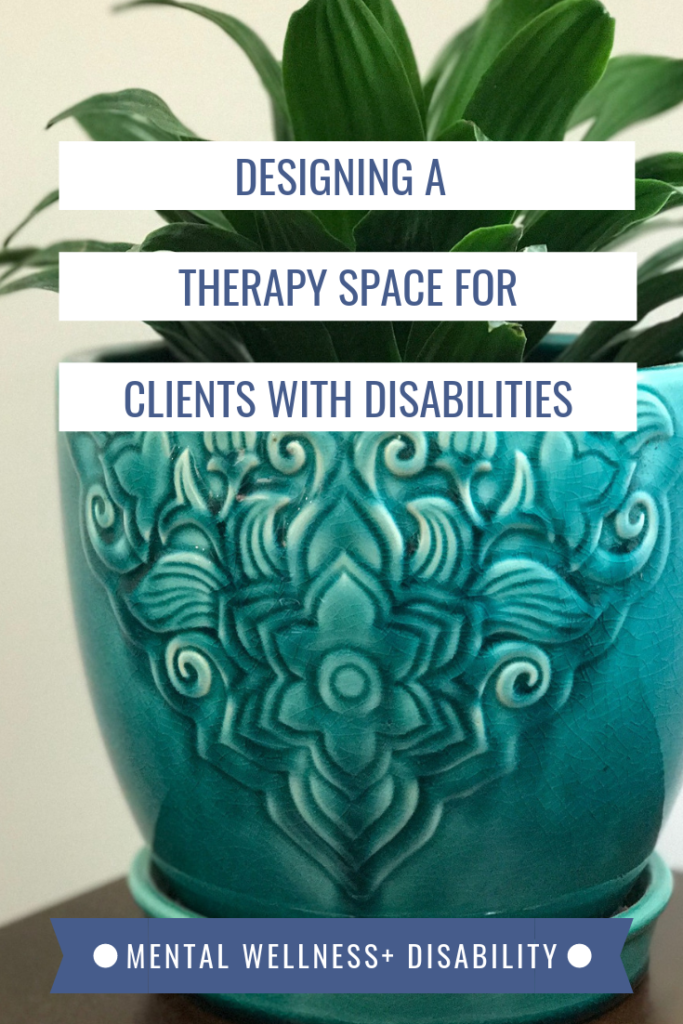
Space considerations for seeing clients with disabilities for counseling
Before I could start designing my space, I had to choose just the right office.
The importance of a ground floor office
The top floor corner office is synonymous with success for most folks. But I will probably always have a ground floor office.
I was once marooned for two hours on the 4th floor of a medical office when I was a Case Manager. I was with a client who used a wheelchair when the building’s one elevator broke. The client was extremely embarrassed when firefighters offered to carry him and his wheelchair down the stairs.
I never want to risk a client feeling trapped or unsafe or like a nuisance. So, I knew that an office on the ground floor with plenty of accessible parking and a well graded ramp were non-negotiable.
Eventually I found a quiet, lovely, two-room office suite on a ground floor that also featured my other essential:
An in-suite bathroom
Many of my clients appreciate knowing that a bathroom is nearby, for various reasons.
As a result of their medical needs, many of my clients don’t have a lot of warning when they need to use the toilet. I would never want a client to have anxiety that they couldn’t get to the bathroom if they needed to. For that reason, I wanted to have a bathroom available to them as close as possible.
Some may want a private, locked space to check their blood sugar, adjust their colostomy bag, shift their brace, etc. I wanted my clients to know that they have a dedicated, private space to handle whatever it is that makes them comfortable to better attend to our work together in session.
Of course, it was important to me that the bathroom be ADA compliant.
I also outfitted the space with a motion sensor hand towel dispenser. This ensured that clients could access towels without having to roll or pull at the dispenser.
Here’s my little in-suite bathroom:
The feel of the space
Now that I had an office selected, it was time to think about how I wanted to the space to feel and function, and to choose décor to support this.
If you go on Psychology Today or a therapist’s website, you’ll often read descriptors of offices that use words like ‘safe space for healing’ and ‘warm, home-like environment’. While I wanted my office to feel those ways, there was something else that was at the top of my mind as I picked pieces and arranged the space.
Respect
Having previously worked as a Case Manager, I have sat in countless healthcare spaces with clients with disabilities. Some spaces had people with disabilities in mind, though many didn’t. Those that did often trended toward juvenile décor, with bright colors and ‘accident-proof’ furniture. The spaces often felt sterile, clinical, or overly academic.
I knew that I wanted none of that for my clients. As I envisioned an adult with a disability coming to my office, I wanted them to immediately feel that I view them as an adult first, and not as a child in the body of an adult.
It feels like a bold choice, but I elected not to have a designated ‘kids’ play area’ in my waiting room. While it’s what’s typically done in therapy suites, I wanted to stay true to my clients, who are either adults with disabilities or parents of kids with special needs.
So, the waiting room reflects that this is a space just for adults, to further demonstrate the respect that I have for my adult clients.
Of course, I do have some diversions available, like magazines and this fun little tic tac toe set:
I also set up a tea station and have water and cold coffee available in the waiting room to further help my clients feel welcomed.
Choosing a décor to match my style of therapy
As you look through the pictures of my office, you’ll notice that the general aesthetic is campaign or colonial style. There are lots of brass and leather accents, galleries of scientific images of flora and fauna, and an overall feeling of pieces coming together from around the globe.
I chose this style because I think a lot of the design values are consistent with my style of therapy. In addition to being eclectic, it’s about finding the intersection between what’s lovely and comfortable with what’s functional and helpful.
There’s a sense of exploration, hope for the future, and an appreciation that what is scientific can also be beautiful.
These all match my style of therapy quite perfectly, and so it seemed to be a natural fit.
Many of my counseling clients who have disabilities choose to dip in and out of therapy of the years, as they face new challenges. I wanted a space that would continue to feel familiar to them. This was another reason that I avoided trendy in favor of classic design.
Choosing furniture and office décor to support adults with disabilities in counseling
Having selected a general décor style, it was time to furnish my space. Here are some of the considerations I had as I chose specific pieces.
Clock
I am nothing short of embarrassed by how long I spent looking for just the right clock. Both the look and sound were critical. Here are the things I considered as I searched for the perfect clock:
- Because some of my clients struggle with Roman numerals, the clock had to have Arabic numerals.
- Many clocks have just the numbers 12, 3, 6, and 9 printed. The perfect clock for my office would have all 12 numerals printed.
- Because some of my clients have vision loss, I wanted the hour and minute hands to be very clearly distinguishable from a distance.
- For the same reason, the clock had to have good contrast between the background and the print.
- All therapists have to be comfortable with silence, but therapists who see clients with disabilities have to be really, REALLY comfortable with silence. My clients respond better to therapy when they have ample time to process and develop questions. Many of my clients have been told for years by educators and parents that they need to hurry up, and a ticking clock can be an intrusive reminder of their feeling inept and slow. Rather than have my clients be mindful of the time, I want them to focus freely on the internal experience and their processing of our discussion. For that reason, a completely silent clock was a non-negotiable for me.
After way too much time spent scouring the internet, I found a clock that meets every need:
Plants
I filled the office with live plants to help purify the air. I was mindful that nothing I selected was toxic.
While I have very little worry of this, I wanted to be absolutely certain that there would be no ill effects if a leaf were to end up in the mouth of either a client, or a younger family member, or any service animals who might visit my office.
Furniture layout
When selecting the location of the furniture, I was mindful to ensure that a person using a wheelchair, walker, or cane would have no trouble accessing both the waiting room and my therapy office.
In the waiting room I chose side tables in lieu of a coffee table. In my office, I allowed ample room between my chair and the couch, so that nothing would have to be rearranged for someone using a wheelchair to feel welcomed.
The things clients don’t see
Many of my clients with disabilities have sensitivities to certain scents or may have allergic reactions to certain cleaners. For that reason, the office is cleaned with cleaning products free of dyes, scents, or other potentially harmful ingredients.
I also skipped the essential oil infusers and scented candles that many other therapists use in their spaces, for the same reasons.
My elephants
This design choice is more about keeping me accountable as a clinician. But since that benefits my clients, I’m including it here as an intentional element of my office décor.
Picture in your mind an elephant.
Now, consider these two pictures:
The picture on the left is of?…an elephant. And the picture on the right? Yup, that’s also an elephant. The two are the same, right?
Nope.
The one on the left is an African elephant, and the one on the right is an Indian elephant, one of the three types of Asian elephants. They represent two similar but inherently different animals.
African elephants are large and have a single dome at the top of their head. Their ears are large, their skin is wrinkled, and both males and females have large tusks. Their trunks are long and flexible, and they have two fingers that they use to pick up and manipulate objects.
By contrast, Indian elephants are smaller, have two domes at the top of their head. Only a small percentage may grow very small tusk-like teeth known as tushes. Their trunks are more rigid, and have only one finger. They use them they pick items up and tuck them against their trunks.
There are lots of other differences, but those are some highlights. Considering them, it’s clear that these are actually two very different animals, who would approach the same task differently by design.
Now, think back to the elephant you imagined in your mind. Did it have tusks? Big or little ears? How about its skin, head shape, and trunk? I bet that for most people the elephant in your mind wasn’t exclusively an African or an Indian elephant. It probably was a hodgepodge animal that was a mix of the two species.
The elephant in your mind, while representing some general features of elephants, probably doesn’t actually exist in the real world.
I always try to keep this idea at the center of my practice, especially when treatment planning.
It can be helpful to have a general schema in mind for who my clients are. That might be ‘adults with Aphasia’ or ‘transition age people with Autism,’ or ‘special needs moms’.
But I cannot let that picture in my mind cloud my clinical observation and consideration of the actual person who comes to see me for counseling.
This person has a unique cultural, biological, and psychological history that I must learn and value for our work together to be meaningful and helpful to my client.
Once a person comes into my office for counseling, they cannot be just a diagnostic code. It’s my role to see past their diagnosis and to uncover the unique strengths and traits that they bring to therapy that will become their assets as they overcome the challenges they face.
So, I have my elephants hung just outside of my office. I see them and am reminded of this fact every time I enter the waiting room to welcome a client into my office for therapy.
I hope you’ve enjoyed this post as much as I enjoyed designing my office! I’d love to hear from you, what’s the most interesting design choice you’ve ever seen in a space designed for clients with disabilities? Leave a comment and let me know!

